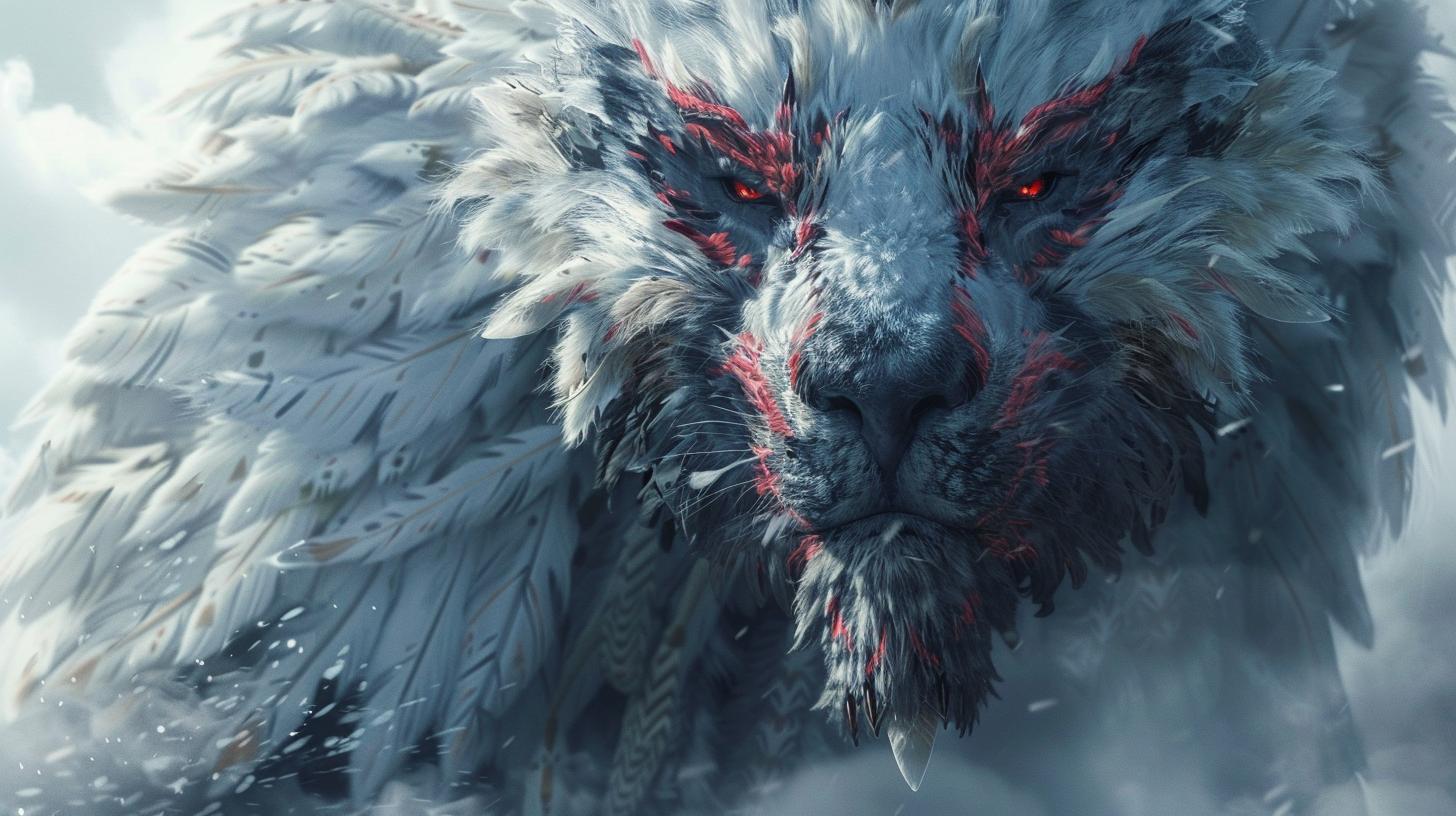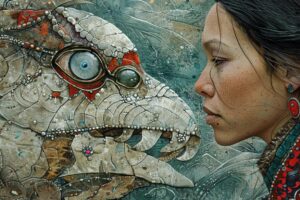Tupilaq Mythology: The Intriguing Arctic Creatures of Inuit Folklore

Tupilaq mythology originates from the culture of the Inuit, primarily in Greenland, where these vengeful creatures were created by practitioners of witchcraft and shamanism. The tupilaq were crafted with animal parts and sometimes even from children’s remains, brought to life through ritual chants, and set loose in the sea to seek and harm their targeted enemies.
Over time, tupilaq have transitioned from feared spirits to valued works of Inuit art, reflecting the rich cultural traditions of Arctic peoples.
History of Tupilaq Mythology
The origins of Tupilaq legends trace back to the rich cultural heritage of the Inuit communities in the Arctic region of Greenland. This unique mythology holds deep significance in the beliefs and traditions of these indigenous peoples, shaping their worldview and understanding of the spiritual realm.
Origin of Tupilaq Legends
The tales of Tupilaq creatures have been passed down through generations, evolving over time to become intricate narratives that blend elements of spirituality, magic, and folklore. These legends serve as a window into the Inuit understanding of the natural and supernatural forces that govern their lives.
Cultural Significance in Inuit Communities
Within Inuit communities, the Tupilaq mythology plays a crucial role in shaping social norms, spiritual practices, and even the daily lives of individuals. The stories of these vengeful spirits carry moral lessons, warnings, and teachings that reflect the values and beliefs of the Inuit people.
Evolution of Tupilaq Beliefs
Throughout history, the beliefs surrounding Tupilaq have experienced transformations, adapting to changing cultural landscapes and external influences. From traditional practices to contemporary interpretations, the evolution of Tupilaq beliefs showcases the resilience and adaptability of Inuit culture.
Creation and Purpose of Tupilaq
The creation and purpose of tupilaq in Inuit mythology is a complex and intricate process that involves spiritual beliefs, rituals, and intentions. In this section, we explore the making of a tupilaq, the shamanic practices involved in its creation, and the intentions and consequences of using these vengeful creatures.
Making of a Tupilaq
The making of a tupilaq is a secretive and sacred practice that requires skilled craftsmanship and spiritual connection. Crafted from animal parts and sometimes human remains, the tupilaq is brought to life through ritual chants and incantations, imbuing it with its vengeful purpose.
Shamanic Practices in Tupilaq Creation
Shamanic practitioners play a central role in the creation of tupilaq. By channeling spiritual energies and invoking ancient deities, shamans guide the transformation of raw materials into powerful and malevolent spirits.
The process is shrouded in mystery and mysticism, with each step carefully orchestrated to ensure the tupilaq’s potency.
Intentions and Consequences of Using Tupilaq
Once a tupilaq is created, its purpose is clear: to seek out and harm the intended target. However, using a tupilaq comes with risks and consequences. If the target possesses greater magical powers, the tupilaq may be turned against its creator, leading to dire outcomes.
The act of creating and using a tupilaq requires careful consideration and reverence for its spiritual significance.
Variations of Tupilaq Across Inuit Cultures
Exploring the diverse interpretations and representations of tupilaq across various Inuit cultures reveals the rich tapestry of beliefs and traditions within these communities. Each group imbues the concept of tupilaq with unique characteristics and meanings, reflecting their distinct cultural identities.
Tupilaq in Igloolik Culture
- The Igloolik people view tupilaq as mystical entities that possess both physical and spiritual attributes.
- In Igloolik culture, tupilaq are believed to embody the essence of the Arctic landscape, representing the balance between nature and the supernatural world.
- Rituals involving tupilaq in Igloolik culture often center around seeking protection from malevolent forces and invoking the spirits of the land for guidance.
Tupilaq in Kivallirmiut Tradition
- In Kivallirmiut tradition, tupilaq are regarded as manifestations of ancestral wisdom and traditional knowledge passed down through generations.
- These tupilaq are revered for their role in preserving cultural heritage and connecting the community with its roots.
- Kivallirmiut ceremonies involving tupilaq often serve as a means of honoring ancestors and celebrating the continuity of cultural practices.
Different Interpretations in Greenland and Inuinnait Communities
- The Greenlandic perspective on tupilaq emphasizes the creature’s role as a guardian spirit, offering protection and guidance to those who honor its presence.
- In contrast, the Inuinnait communities view tupilaq as enigmatic beings that bridge the gap between the physical and metaphysical realms.
- These differing interpretations showcase the nuanced understanding of tupilaq within Inuit cultures, highlighting the complexity of their mythological beliefs and traditions.
Transformation from Vengeful Spirits to Artistic Souvenirs
The evolution of tupilaq from vengeful spirits to esteemed works of art represents a profound shift in cultural perception and artistic expression.
This transformation has been influenced by various factors, including European encounters with Inuit traditions, contemporary artistic practices, and the growing appreciation for Inuit craftsmanship.
European Influence on Tupilaq Representation
- The arrival of Europeans in Greenland had a significant impact on the depiction and interpretation of tupilaq. European artists were captivated by the mysterious legends of these mythical creatures and began incorporating tupilaq motifs into their own artwork.
- European representations often focused on the menacing and malevolent aspects of tupilaq, emphasizing their role as avenging spirits.
This portrayal helped perpetuate the perception of tupilaq as dark and dangerous entities.
- Through the lens of European art and literature, tupilaq became symbolic of the exotic and unknown, fueling fascination and curiosity about Inuit culture and mythology.
Contemporary Artistic Production of Tupilaq
In modern times, the creation of tupilaq has evolved into a highly specialized form of artistic expression within Inuit communities.
Skilled craftsmen and artists meticulously carve tupilaq statues from natural materials, imbuing each piece with cultural significance and artistic flair.
- Contemporary tupilaq artists draw inspiration from traditional myths and legends, infusing their creations with personal style and interpretation.
- These modern tupilaq sculptures serve as more than just artistic endeavors; they are powerful symbols of cultural identity, connecting present-day Inuit communities to their rich heritage and ancestral beliefs.
Collecting and Appreciating Inuit Tupilaq Art
- The appreciation of Inuit tupilaq art has grown beyond cultural boundaries, garnering recognition and acclaim in international art circles.
- Collectors and art enthusiasts are drawn to the intricate craftsmanship and symbolic depth of tupilaq sculptures, viewing them not only as artistic objects but also as embodiments of ancient wisdom and spiritual energy.
- Through the act of collecting and displaying tupilaq art, individuals worldwide contribute to the preservation and celebration of Inuit cultural heritage, ensuring that the legacy of these mythical beings endures for generations to come.
Influence of Tupilaq Mythology on Modern Culture
The influence of Tupilaq mythology extends beyond traditional beliefs and practices, shaping modern culture in various ways.
From popular culture references to profound artistic symbolism, the legacy and impact of Tupilaq myths continue to resonate in contemporary society.
Popular Culture References to Tupilaq
- TV shows and movies often incorporate elements of Tupilaq mythology to add an air of mystery and intrigue.
- Artists and musicians draw inspiration from Tupilaq legends, creating visually striking and emotionally resonant works.
- Gaming industry occasionally features Tupilaq-inspired characters and storylines, captivating audiences with tales of ancient spirits.
Symbolism and Meaning of Tupilaq in Art
In the realm of art, Tupilaq serves as a powerful symbol of resilience, transformation, and ancestral wisdom.
Artists interpret Tupilaq motifs in diverse ways, exploring themes of revenge, protection, and the interconnectedness of all living beings.
Interpretations in Contemporary Art
- Modern artists use Tupilaq imagery to challenge societal norms and explore environmental issues.
- Tupilaq-inspired sculptures and paintings evoke a sense of wonder and reverence for indigenous cultures.
Legacy and Impact of Tupilaq Myths
The enduring legacy of Tupilaq myths lies in their ability to bridge past and present, connecting individuals to their cultural heritage and instilling a sense of pride and curiosity.
As modern society grapples with existential questions, Tupilaq mythology offers a lens through which to view the complexities of human existence.
.




















